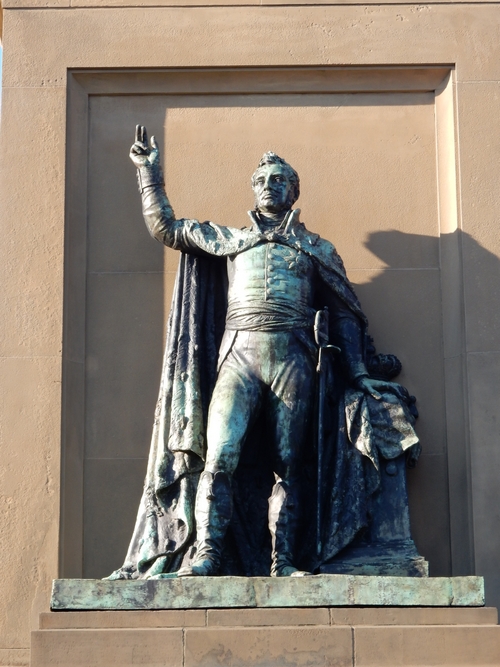For over 200 years, our Head of State has read the Speech from the Throne on Prinsjesdag. What has actually changed in that time and what has remained the same? Let’s take a look at the Speech from the Throne of 1820.
The date
To begin with: in 1820, Prinsjesdag was not on the third Tuesday in September, but on the third Monday in October. But with the Constitutional Reform of 1848, the Tweede Kamer had much more to say and the budget was set each year. This had to be done before January 1. So in order to give the Tweede Kamer more time to discuss and amend the budget, Prinsjesdag was moved to the third Monday in September. In 1887 it became the third Tuesday of September that we still know. Back then, travel was by steam train and carriage, which required members of parliament to leave home the day before Prinsjesdag in order to be in The Hague on time for the Speech from the Throne. Members of Christian parties objected to travelling on a Sunday, the day of the Lord, in order to be present for a Speech on Monday.
The author of the Speech from the Throne
In 1820 King William I ruled our country. And we can take that reigning literally. He had ministers and there was a parliament, but it was William who made the decisions. So the Speech from the Throne in 1820 was his own. Now it is different: King Willem-Alexander reads a speech that the ministers write for him to present.
The opening words
The king began his speech in 1820 with the greeting ‘Noble Gentlemen!’. Well yes, it would take almost 100 years before Suze Groeneweg would be the first woman elected to the Tweede Kamer.
Family
At the beginning of his Speech from the Throne,King William looked back on sad and joyful events in his family. His mother and his sister had died. His mother was Princess Wilhelmina of Prussia, wife of Stadholder William V. In 1787 they had been expelled from The Hague and lived in Nijmegen. She was a resolute lady and decided to go back to The Hague to arrange for her husband’s return. At the Goejanverwellesluis she was stopped by the Patriots, the Prince’s opponents. This historical event is depicted on a classroom poster. When I was in primary school there were several of these classroom posters hanging on the wall. Their aim was to give us pupils a daily lesson in history.
The joyful event was the birth of the crown prince’s third son. This grandson of King William I was Prince Hendrik whom we know well in The Hague, because there is a square and a street named after him in the cosy Zeeheldenkwartier. He was called Hendrik the Navigator, because he had a long career in the Navy.
Innovations
For a long time provinces in the Netherlands had their own, and often different, standards for weights and measures. For example, you had the ‘ell’ as a measure of length. This was derived from the length of the forearm, the ulna (in Dutch: ellepijp). But there were several ‘ellen’. The Amsterdam ell was 68.8 cm and the Twente ell 58.7 cm. An attempt at standardization had already been made by declaring the Hague ell (69.4 cm) to be the national standard. But in the end King William I chose to introduce the metric system throughout the Netherlands, with the meter, kilo and other measurements that we still use.
In his speech, the king also expressed his pleasure with the progress of vaccination against cowpox, a nasty viral disease. In 1818, he had established a Gold Medal for Cowpox Vaccination for doctors who had demonstrably vaccinated more than 100 people.
Poverty
Around 1820 the economy was in a bad shape and there was a lot of poverty. At the same time in Drenthe there were the so-called ‘wild lands’ (moorland, bogland) , where no agriculture was possible without cultivation. In 1818, Johannes van den Bosch founded the ‘Maatschappij van Weldadigheid (=’Society for Charity’). Its aim: to relocate paupers (=poor people) from the cities to agricultural colonies where they could take care of their own livelihood. One of these colonies was Frederiksoord, named after the second son of the king. In the Speech from the Throne, the king praised this initiative
Finances
No Speech from the Throne is complete without talking about money. About this the king said: ‘The state of the Kingdom’s finances, since the opening of your last meeting, has not undergone any significant and, at least, no unfavourable changes’. I suppose that by using ‘no unfavourable’ the king meant that the Netherlands was in relatively good financial shape.
That is confirmed by the announcement that the proceeds of the excise duties will probably be higher than in the previous year.
King Willem I concluded this speech with confidence that he would always be supported by the wisdom and patriotism of the members of parliament.
Would you like to know more about the ancestors of King Willem-Alexander? Invite friends and colleagues to do the Orange Walk.






